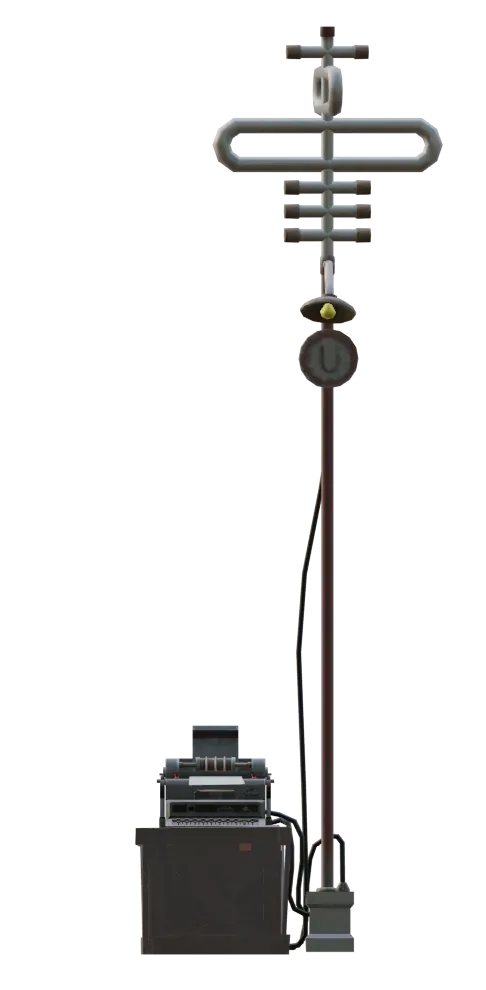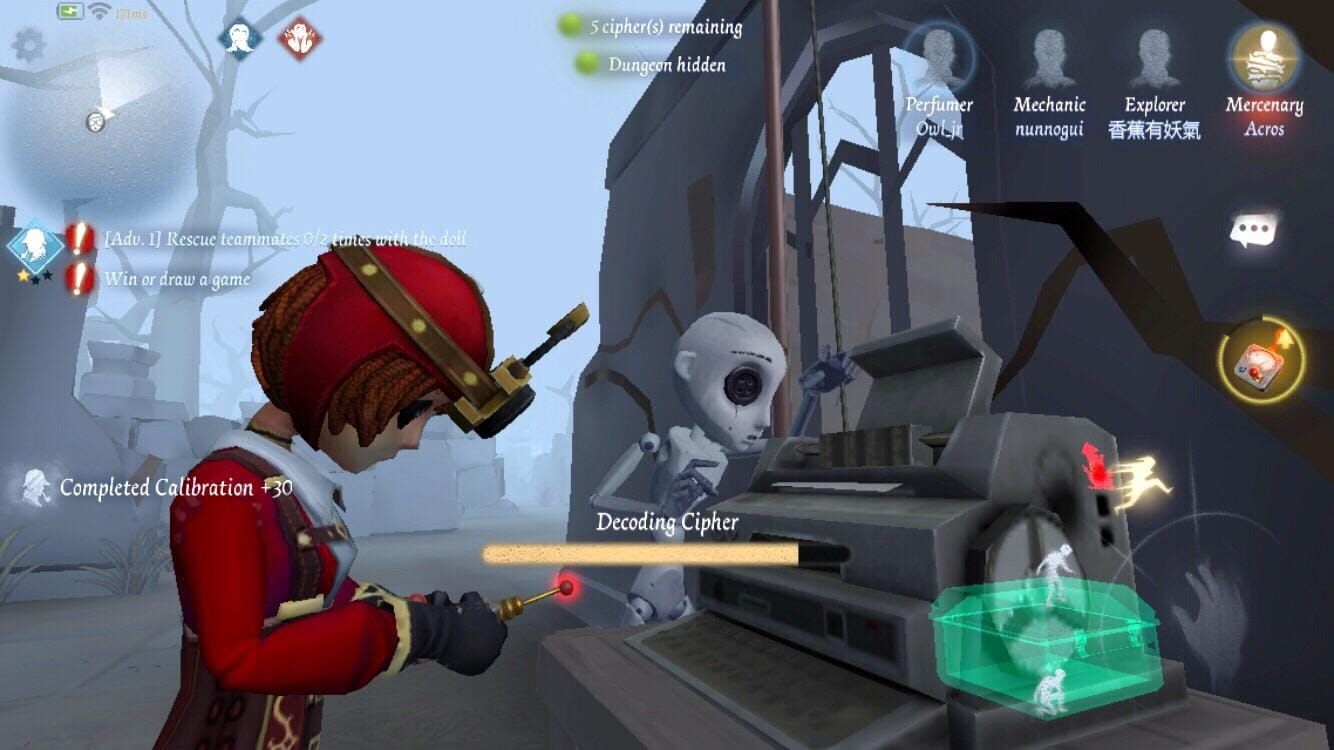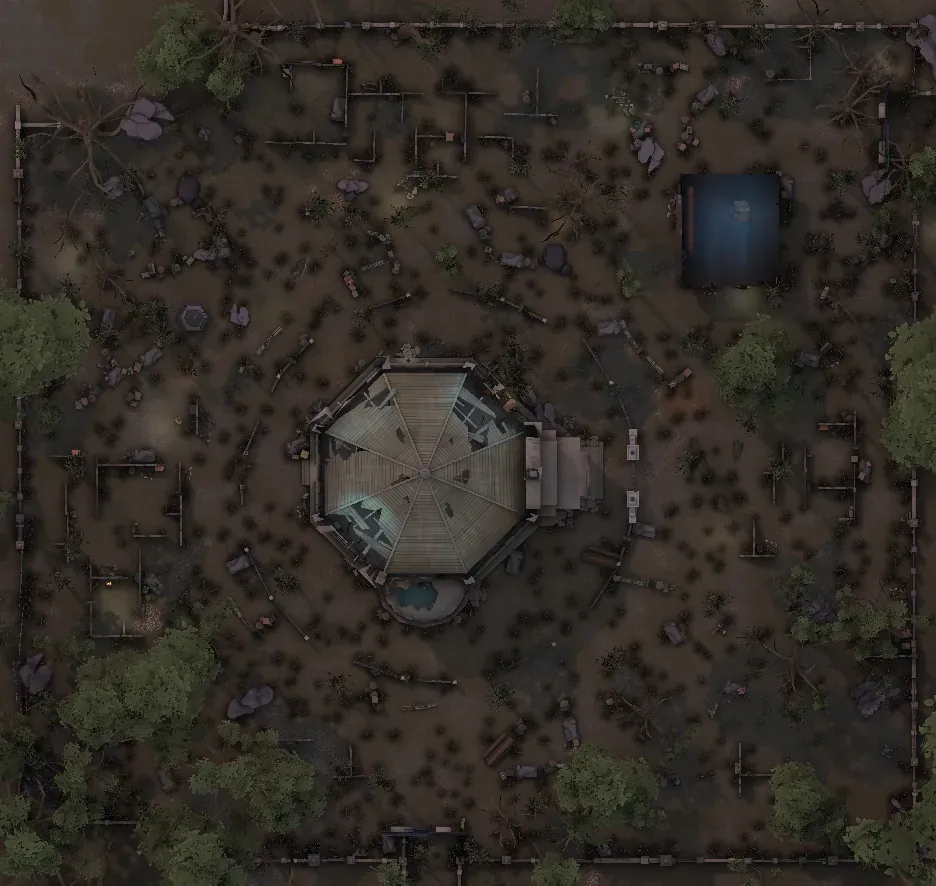Master Identity V's asymmetrical gameplay with this comprehensive 2025 guide covering essential character roles, meta team compositions, survival strategies, and common pitfalls. Learn proven techniques for both survivors and hunters, from basic mechanics to advanced pro-level tactics that will accelerate your ranking progression.
Getting Your Bearings: What Identity V Actually Is
Here's the deal with Identity V – it's basically a high-stakes game of cat and mouse, except the mouse has friends and the cat has supernatural powers. You've got four survivors trying to crack codes while one hunter attempts to turn them into rocket fuel. Literally.
The math is pretty straightforward: survivors need to decode 5 out of 7 cipher machines scattered around the map, then bolt for the exit gates. Meanwhile, the hunter's job is to eliminate at least 3 survivors using these ominous rocket chairs that... well, let's just say they're not for sitting. Each match runs about 10-15 minutes, which sounds short until you're the one being chased by a maniacal clown with a rocket-powered dash.

What makes this interesting (and occasionally rage-inducing) is how the power dynamic shifts throughout the match. Survivors start strong – they outnumber the hunter 4-to-1 and can coordinate their efforts. But here's where it gets spicy: the hunter grows stronger over time through something called the Presence system. Think of it as their anger meter filling up, unlocking nastier abilities as the match progresses.
The chair elimination system works in three brutal stages. Stage 1 gives you 30 seconds at 0-49% progress – plenty of time for a rescue if your team's paying attention. Stage 2 (50-99%) is where things get dicey, another 30 seconds but you're one rescue away from permanent elimination. Hit 100%? Game over, no takebacks.
Everyone starts with five free survivors – Doctor, Lawyer, Thief, Gardener, and Lucky Guy – plus Hell Ember as your hunter option. Want more characters? You'll need Clues (earned through gameplay) or Echoes (premium currency). Speaking of which, for convenient Identity V Echoes top up online, BitTopup offers competitive pricing with instant delivery and secure transactions, supporting multiple payment methods for seamless character unlocks.

The game modes break down into Quick Match (perfect for learning without pressure), Ranked matches (where things get serious with seasonal resets and character bans), and Custom modes like the chaotic 2v8 Duo Hunters – though that's only available during specific server windows: 6:00-12:00, 14:00-19:00, and 21:00-0:00.
Cross-platform play works across iOS 10.0+, Android, and Windows PC. Fair warning though – you'll need 3.7GB of storage space, so maybe delete those old photos first.
Mastering Controls (Because Fumbling Gets You Eliminated)
Let's talk about something that'll save your life more than any character ability: proper control setup. Camera sensitivity isn't just a preference thing – it's survival. You need smooth tracking during those heart-pounding chases, especially when facing hunters like Geisha whose dash can come from unexpected angles.
Manual camera control? Non-negotiable. Auto-camera will get you killed faster than you can say Terror Shock. You need to predict where that hunter's going, monitor your teammates' positions, and spot escape routes before you need them.
The quick chat system deserves special attention here. You get 16 customizable message slots, and trust me, you'll want to optimize these. Focus on Decoding! becomes your rally cry for cipher prioritization. Cipher Machine Primed! coordinates those crucial 98-99% completion moments. Stay put, I'm coming! lets your team know you're the rescue volunteer – because nothing's worse than three people abandoning their ciphers for the same rescue.
Your interface setup should prioritize cipher progress visibility and radar monitoring. Those gray circles on your radar? Speech bubbles from teammates. Red dots? That's the hunter, and you probably want to know where they are. The Terror Radius system provides audio cues through heartbeat intensity – crank up those audio settings for competitive advantage.
Server selection matters more than you'd think. Asian servers tend to favor aggressive rescue strategies (sometimes to a fault), while global servers lean toward decode-focused gameplay. Pick based on your playstyle and ping tolerance.
Character Roles: Finding Your Identity (Pun Intended)
Survivor Archetypes That Actually Matter
Decoders are your cipher-cracking specialists, and in 2025's meta, Mechanic reigns supreme.

Her robot operates at 200% decoding speed and can't be interrupted by hunters – that's basically having a fifth teammate who's immune to jumpscares. S-tier for good reason.
Prisoner brings team synergy through machine linking, creating decoding boosts that benefit everyone. Mind's Eye offers 30% faster decoding plus echolocation detection, though she pays for it with slower movement and some seriously sketchy vaulting mechanics. (Pro tip: don't pick her if you're still learning kiting basics.)
Kiters exist to waste the hunter's time, and boy, are some of them good at it. Perfumer's Euphoria spray lets her recall damage with three uses per match – essentially giving her extra health states. The trade-off? 15% longer healing times and tripled calibration penalties. She's high-risk, high-reward.
Forward brings the pain with rugby charges that can stun hunters, while Antiquarian's flute provides knockback effects that can save teammates in clutch moments.
Rescuers are the heroes (or martyrs) of every team. Coordinator's flare gun provides brief hunter stuns, but she suffers a brutal 60% decode debuff when someone's chaired – the game's way of saying stick to your job. Mercenary extends chair time by 30% and has delayed damage mechanics that make him nearly unkillable during rescues. Cowboy offers lasso mobility for creative rescue positioning.
Hunter Categories (From Beginner-Friendly to Nightmare Fuel)
Beginner Hunters won't overwhelm you with complexity. Hell Ember (D Tier, 5/35 points, Difficulty 1.5) uses puppet systems that are straightforward but effective. Smiley Face (D Tier, 10/35 points, Difficulty 1) has that rocket dash we mentioned – simple to understand, satisfying to land. Gamekeeper (C Tier, 16/35 points, Difficulty 2) employs chain hooks for pulls and area denial.
Advanced Hunters are where things get spicy. Dream Witch (S-Tier) enables multi-pressure through follower control – essentially being in multiple places at once. Sculptor manipulates statue positioning for map control, while Bloody Queen creates mirror pressure that'll make your head spin. These Difficulty 3 hunters demand 100+ matches of experience and comprehensive map knowledge.
For efficient character acquisition without the grind, players can buy cheap Identity V Echoes recharge through BitTopup's secure platform, offering instant delivery and competitive rates for unlocking meta characters.
2025 Meta: What's Actually Working Right Now
Season 39 Shakeup
The latest season brought some significant changes – 10-15% rescue buffs and 5-10% healing nerfs that completely reshuffled the tier lists. S-Tier survivors currently dominating include Mechanic (that 200% remote decoding is just broken), Priestess with her portal mobility and hunter stuns, Seer's owl shields for protection, and Antiquarian's flute knockbacks.
The optimal balanced composition right now? Mechanic + Priestess + Mercenary + Seer. You get decoding efficiency, repositioning capability, rescue specialization, and information gathering all wrapped up in one terrifying package for hunters to face.

Decoding Daredevils run 2-3 decoders (usually Mechanic and Prisoner) with Knee Jerk Reflex persona builds. It's aggressive cipher rushing that aims for 3+ escapes through pure speed over survival tactics. High-risk, but when it works, hunters barely know what hit them.
Rescue-Focused teams go all-in with Coordinator + Mercenary + Forward + Cowboy. Maximum salvation potential through stuns, damage tanking, mobility dashes, and lasso positioning. These teams live and die by their ability to keep everyone alive – sometimes literally.
Survivor Fundamentals (Or: How Not to Die Immediately)
Decoding Without Losing Your Mind
Cipher management starts with basic distribution – one machine per survivor at match start. Collaborative decoding might seem smart, but it actually reduces individual efficiency. Don't do it unless you're specifically coordinating a rush strategy.
The 3-minute acceleration event provides 30% speed boosts, and this is where coordination becomes crucial. When that notification pops up, your team needs to be ready to capitalize on maximum efficiency.
Calibration mastery separates good players from great ones. Perfect timing adds 1% progress per calibration, while failures cause 2-second stuns and alert the hunter to your location. Practice in training mode until you can hit these consistently.
Cipher priming is an advanced technique where you stop at 98-99% completion for Borrowed Time synchronization. When coordinated properly through Focus on Decoding! messages, this enables 50% speed boosts and healing during endgame phases when Detention (hunter's double damage) activates.
Kiting: The Art of Not Getting Caught
Effective kiting begins before the chase even starts. Terror Radius detection through heartbeat intensity gives you precious seconds to prepare escape routes. Scan for pallets and windows before you need them – panic planning gets you eliminated.
Good kiters aim for 60+ second chases. That's enough time for your team to complete 2-4 ciphers, making your eventual elimination worthwhile. Loop management involves pallet timing when hunters reach adjacent positions – not when they're still halfway across the map.
Fake drops are psychological warfare. Start the pallet animation, then cancel it to waste the hunter's attack. Transition between structures when your current loop becomes exhausted.
Body blocking post-rescue requires positioning behind teammates to absorb hits, especially during Tide Turner's 20-second immunity window. Position yourself on the survivor's left side for maximum protection coverage.
Rescue Timing (Because Someone Has to Do It)
Rescue operations demand precise timing based on hunter type. Basic-attack hunters allow rescues at 30% progress, while strong guarders require waiting for 10-30% windows. Stage 1 (0-49%) provides 30 seconds with full rescue potential – plenty of time if your team's coordinated.
Stage 2 (50-99%) allows one final rescue attempt before elimination. This is where Tide Turner persona becomes essential, providing 20-second damage immunity for both rescuer and rescued.
Unsafe rescues without Tide Turner or during high chair progress lead to immediate re-elimination. Sometimes it's better to let someone go and prioritize decoder survival over risky salvation attempts. Harsh but true.
Basement rescues? Only attempt these with 1-3 ciphers remaining and exceptional coordination. Limited escape routes make these extremely dangerous.
Hunter Fundamentals (Embrace Your Inner Villain)
Tracking and Patrolling Like a Pro
Effective patrol patterns prioritize central cipher machines while utilizing Tinnitus for active decoding detection. Those audio cues and visual indicators aren't just atmosphere – they're intelligence.
The Presence system enhances your abilities through attack-based gain or Insolence trait for passive accumulation. This scaling is what makes hunters terrifying in late-game scenarios.
Footprint tracking and sound detection provide location intelligence, but experienced survivors know this too. They'll try to mask their movements and coordinate rotations. Adapt your patrol routes based on survivor composition – prioritize vulnerable targets while maintaining cipher pressure.
Chase Optimization (Making Every Second Count)
Mind games involve fake animations and unpredictable movement patterns. Survivors try to predict your actions, so be unpredictable. Target vulnerable survivors, but don't commit to chases longer than 1-2 minutes without results.
Ability timing with survivor animation locks (vaulting, pallet interactions) maximizes hit potential. Terror Shock timing during survivor interactions provides instant elimination potential – learn to predict when survivors will heal, vault, or drop pallets.
Loop cutting minimizes kiting options through route prediction and positioning. Force survivors into disadvantageous areas where their escape options become limited.
Chair Camping Strategy (The Necessary Evil)
Camping effectiveness varies by situation. Proxy camping involves nearby searches while risking rescue attempts – you maintain some map pressure while guarding your elimination. Direct camping guarantees elimination at the cost of cipher progress.
Post-final cipher camping with Detention provides double damage for endgame pressure. This is often your best shot at securing additional eliminations.
Counter-camping strategies include cipher rushing coordination, fake rescue baiting to waste your attacks, and rescue timing at 49% progress for additional chair phases. Basement control offers maximum camping efficiency due to limited access routes, though it requires significant time investment.
Persona Builds That Actually Work
Meta Builds for 2025
The '39' build combines Borrowed Time (3 o'clock position providing 0.5 damage healing + 50% speed on final cipher) with Knee Jerk Reflex (9 o'clock position granting 30% speed for 3 seconds post-vault with 40-second cooldown). This configuration suits kiters requiring extended chase duration.
The '36' rescuer build pairs Borrowed Time with Tide Turner (20-second invincibility post-rescue), ensuring rescue success while providing endgame benefits. It's the standard for dedicated rescuers.
Advanced '129' builds add Flywheel Effect (0.5-second immunity dash with visible ripple effect) for sophisticated evasion techniques. This excels on harassment characters like Antiquarian who need positioning flexibility.
Situational Adaptations
Map-specific builds matter more than most players realize. Large maps like Lakeside Village benefit from mobility enhancement, while small maps like Red Church favor efficient rotation talents.
Character-specific optimization includes avoiding healing talents on Perfumer (due to existing penalties) while emphasizing decode talents on Mechanic for robot efficiency. Hunter builds prioritize Detention for endgame pressure, Confined Space for window blocking (20 seconds), and Insolence for passive Presence gain.
Map Knowledge: Know Your Battlefield
Key Locations That Matter
Sacred Heart Hospital features chokepoints that favor Hell Ember's puppet control and multi-story elevation perfect for Priestess portal usage. Arms Factory's central cipher positioning requires balanced patrol routes – control the center, control the match.

Red Church's compact layout enhances Coordinator flare gun effectiveness through reduced escape distances, while Lakeside Village's expansive layout prioritizes mobility characters and speed talents.
Pallet-rich zones provide optimal kiting locations with multiple loop options. Open areas create vulnerabilities requiring speed talents or mobility abilities to survive.
Positioning Strategies
Survivor positioning prioritizes pallet and window accessibility while maintaining cipher progress visibility and teammate coordination. Decoder positioning near connected ciphers maximizes efficiency while enabling quick escape routes.
Hunter positioning focuses on central map control with gate lockdown preparation during endgame phases. Teleport ability (70-second cooldown) enables rapid repositioning for pressure maintenance and rescue interruption.
Endgame positioning requires survivors splitting between exit gates to prevent single-point defense while hunters position for optimal gate control using Detention's double damage.
Common Mistakes (Learn From Others' Pain)
Survivor Blunders
Unsafe rescues without Tide Turner or during high chair progress (>50%) lead to immediate re-elimination. Maximum 2 rescues per survivor (1 if >50% initial chair) requires strategic rescue allocation among team members.
Tunnel vision during decoding ignores hunter approach and teammate status, resulting in Terror Shock eliminations during cipher interactions. Keep your head up.
Early pallet drops waste resources and create vulnerability windows. Time these when hunters reach adjacent positions, not when you panic.
Hunter Mistakes
Over-committing to extended chases (>2 minutes) enables excessive cipher progress. Sometimes you need to cut your losses and switch targets to maintain map pressure.
Neglecting Presence management reduces scaling potential during mid-to-late match phases. Use attack-based gain or Insolence trait utilization for ability enhancement.
Ignoring cipher progress and survivor positioning through Tinnitus monitoring leads to surprise cipher completion and endgame pressure loss.
Team Coordination Errors
Window-vaulting with teammates creates collision and vulnerability. Coordinate separate paths at full health for optimal positioning.
Clustering during rescue attempts enables hunter multi-hit potential. Spread positioning and designated rescue volunteers prevent team wipes.
Ignoring healing priorities leaves teammates vulnerable to single-hit elimination. Safe spot healing and team health maintenance enable sustained survival potential.
Pro Tips and Advanced Strategies
Professional Player Techniques
Counter-picking strategies target specific hunters: maintain eye contact with Geisha using audio cues to interrupt dash abilities, use curved paths against Guard 26 bombs, and change positions frequently against Bloody Queen's mirror pressure.
Priestess portals enable basement escapes while Mechanic robots provide safe decode pressure. These interactions separate casual players from competitive ones.
Cipher rush coordination involves priming multiple machines to 98-99% for synchronized completion, triggering Borrowed Time benefits while minimizing Detention exposure.
Mind Games and Psychology
Fake rescue attempts waste hunter attacks and create actual rescue opportunities through positioning mind games and animation feints. Unpredictable movement patterns counter hunter predictions during chases.
Quick message psychology includes I'm out of here! for area evacuation and Get out of here! for team splitting, coordinating movement without revealing specific strategies to hunters monitoring communications.
Advanced Kiting Techniques
Loop transition timing requires environmental awareness and escape route planning. Move between structures when current loops become exhausted, not when you're already trapped.
Ability chaining combines character skills with persona talents for extended survival: Perfumer's Euphoria recall with Flywheel Effect dashes, or Forward's charge with Knee Jerk Reflex speed boosts.
Terror Shock avoidance during healing and vaulting requires animation timing awareness and hunter distance monitoring. Advanced players maintain healing progress while monitoring hunter approach for optimal completion timing.
Endgame Strategies
Exit gate coordination requires survivor splitting to prevent single-point hunter defense. Gate opening requires 18 seconds each, demanding coordination and protection.
Detention counter-play involves speed talent utilization and healing coordination for survival against double damage. Dungeon access provides final escape option for solo survivors, spawning after 2 cipher completion.
Ranking System and Your Path to Glory
How the Tiers Actually Work
The ranking system progresses from Worker Bee through Hydra/Titan tiers with seasonal resets and character bans at higher levels. Points calculation awards +9 for 3+ escapes and -8 for fewer than 2 – consistency matters more than occasional brilliant plays.
Ranked match availability during specific time windows (4-6am, 12-2pm, 6-10pm server time) concentrates the competitive player base for optimal matchmaking. Lower tiers focus on fundamental mechanics while higher tiers require advanced coordination and counter-picking knowledge.
Skill Development Roadmap
The progression path recommends 20-30 matches for basic mechanics (patrol, kiting, decoding), 50-100 matches for consistency, and 100+ matches before attempting advanced hunters or complex strategies. Character specialization in 2-3 survivors or hunters enables mastery before role switching.
Performance analysis through replay review identifies improvement areas and mistake patterns. Track metrics like kite duration, rescue success rate, and cipher contribution.
Competitive Scene
Esports participation through tournaments features best-of-three/five formats with character bans and strategic drafting. Season 39 changes emphasize rescue buffs and healing nerfs, reshaping optimal team compositions.
Achievement systems reward consistent performance and character mastery, with seasonal rewards providing exclusive cosmetics and recognition. Focus on role mastery and strategic understanding over individual match outcomes.
FAQ
What are the best beginner characters in Identity V? For survivors: Doctor (self-healing), Gardener (chair dismantling), and Coordinator (rescue flare gun). For hunters: Hell Ember (puppet control) and Smiley Face (rocket dash) with 1-1.5 difficulty ratings.
How long does it take to decode all cipher machines? Each cipher takes 81 seconds at base speed. You need to complete 5 of 7 total machines – approximately 6-7 minutes of pure decoding time, varying with character abilities and team coordination.
What is the '39' persona build and why is it popular? Combines Borrowed Time (healing + 50% speed on final cipher) with Knee Jerk Reflex (30% speed for 3 seconds after vaulting). Ideal for kiters as it extends chase duration and provides endgame survival benefits.
When should I rescue teammates from rocket chairs? Rescue during Stage 1 (0-49%) with Tide Turner active, or at 10-30% for strong camping hunters. Avoid rescues above 50% without Tide Turner – sometimes it's better to let decoders finish ciphers over risky salvation attempts.
How do I improve my kiting skills quickly? Practice manual camera control, learn pallet timing (drop when hunter is adjacent), aim for 60+ second chases. Use training mode for loop practice and study map layouts for optimal escape routes.
What's the current meta team composition for 2025? Optimal balanced team: Mechanic (decoding), Priestess (mobility), Mercenary (rescue), and Seer (protection). Covers all essential roles while adapting to Season 39's rescue buffs and healing nerfs.

